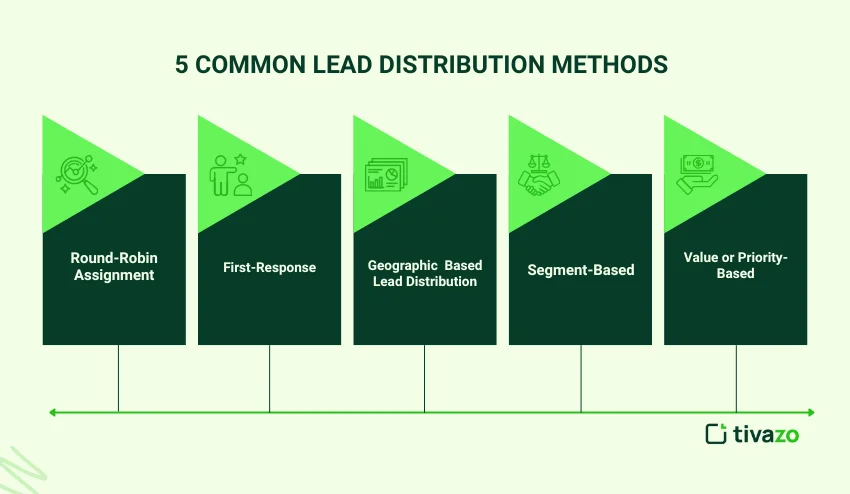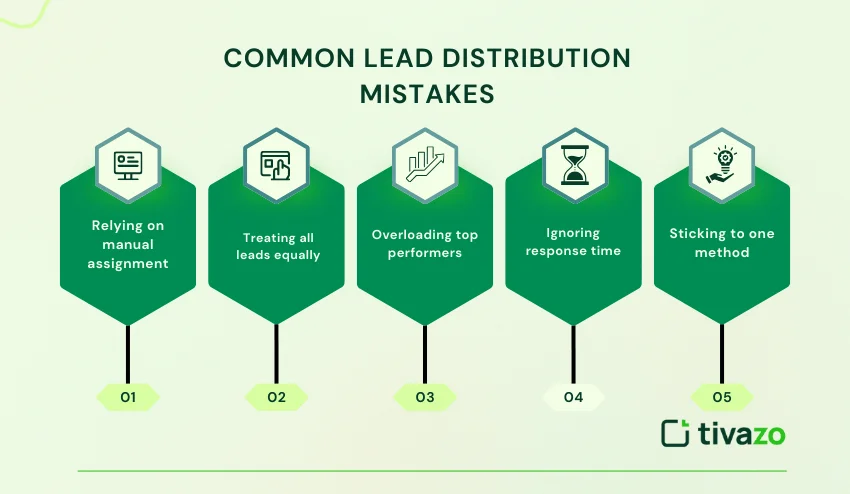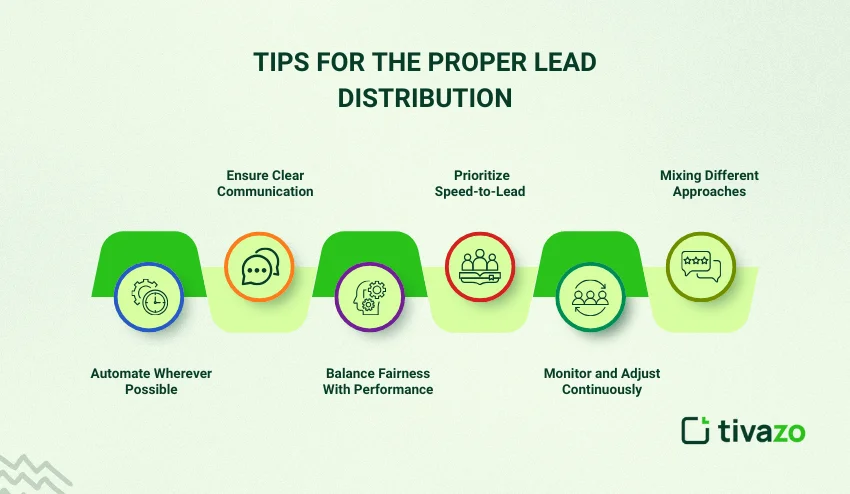Imagine pouring a budget into ads, generating interest, and watching the phone ring only to find that all your agents are busy with low-quality leads, and there are no representatives to catch high-value opportunities.
Lead distribution services can help you resolve this situation. Paired with dynamic call tracking tools, you’ll get a clear view of your current situation and see which touchpoints drive the most valuable calls.
Once you gain these insights, you can fine-tune resource management. Without further ado, let’s examine how you can improve your lead routing and sales team efficiency with the existing resources.
The Importance of Lead Distribution Software for Scaling Sales
Prospects only create value when they reach the right agent. If they don’t, the hundreds you spent to win them produce nothing. To win this battle, you need to use comprehensive lead distribution software, since it can provide you:
- Data-driven insights: The tool shows you potential bottlenecks and ways to optimize the sales process.
- Faster response: Software analyzes the situation and finds the most suitable agent within seconds.
- Transparency: The tool uses a set of pre-defined rules, so there are no biased choices.
- Maximized revenue potential: Modern tools instantly find the best available agents, ensuring that the best opportunities reach the strongest reps.
All these features enable you to scale with minimal disruption. Fine software can instantly route business sales leads to the best agents, whether you have 5 or 5,000 agents.

5 Common Lead Distribution Methods And How They Help You Scale
Poor lead distribution can slow down response times, frustrate your team, and ultimately cost you revenue. Thus, choosing the proper business intelligence tool and distribution method is critical for your growth.
The right approach depends on your business model. While in some niches, you need to be as speedy as possible, sales team management in other units may prioritize in-depth expertise.
https://giphy.com/gifs/maiseltv-amazon-marvelous-mrs-maisel-tv-1oEttHTW7Dh6WFabZd
There is no one-size-fits-all answer when it comes to sales. Search for what works best for your team.
1. Round-Robin Assignment
It’s the simplest lead distribution method where incoming potential clients are assigned to sales reps in a rotating sequence. For example, the first prospect goes to Agent 1, the second to Agent 2, the third to Agent 3, and so on.
This approach prevents burnout for top performers, as every agent receives an equal share of leads. As you hire more agents, the system automatically rotates leads among them.
2. First-Response
While many people may mix this approach with round-robin, they are different. The “first response” method is also known as the “speed-to-lead” approach, as the fastest responder typically wins the opportunity.
This approach is a double-edged sword, as it motivates agents to quickly respond. However, it often results in unhealthy competition between sales reps or uneven lead distribution since some tricky team members can try to claim as many prospects as possible.
3. Geographic or Territory-Based Lead Distribution
Here, potential clients are assigned based on their location or a predefined territory. Each agent is responsible for a specific region, city, or area. This approach of dealing with inbound leads is prevalent in field sales or companies with localized markets.
Each agent perfectly knows their area, which allows them to give the best possible insights. So, prospects know that they can trust your business, which is crucial for your sales performance in the long run.
4. Segment-Based or Skill-Based Lead Distribution
In this case, a lead distribution platform assigns reps in the sectors where they have the most expertise. Since your agents become more confident, they become more persuasive. Their industry-specific knowledge allows reps to address pain points quickly, speeding up deal closure.
5. Value or Priority-Based
In such a lead distribution process, prospects are assigned based on their potential value, score, or urgency. High-scoring potential clients are typically assigned to top-performing agents, while lower-value options may be assigned to newer representatives or nurturing teams.
As your lead volume increases, such prioritization ensures your team still handles the most important prospects without losing efficiency.

Common Lead Distribution Mistakes: What to Avoid If You Want to Scale Your Performance Up
Scaling a sales team isn’t just about hiring more people to handle more calls. It’s more about choosing a lead distribution system and building an internal set of rules that helps you to close more deals with the existing team. While you can teach your sales reps to become better day by day, it may not bring desirable results if you have a broken system. This is where principles of human risk management also come into play, ensuring that your people, processes, and tools are aligned to minimize errors and maximize performance. Avoid the next five pitfalls:
- Relying on manual assignment: If it doesn’t work well for small teams of less than 20 agents, it may become even worse with large ones.
- Treating all leads equally: You need to focus more on hot prospects, as they are more likely to convert.
- Overloading top performers: It may result in their burnout and resignation.
- Ignoring response time: Even an hour delay can kill a deal, so ensure that your agents reach the prospect as soon as possible.
- Sticking to one method only: It drastically limits your growth.

Tips For The Proper Lead Distribution
Getting contact information of a potential client is only half the battle. The real impact comes from how effectively you distribute prospects between existing agents. AI-powered tools can help you analyze lead quality, predict the best-fit reps, and even automate routing in real time. To achieve the best results, you need to use tools that suit your specific situation while leveraging 5 proven lead distribution tactics.
1. Automate Wherever Possible
If you really want to scale up, you should minimize human intervention in the sorting process. Pass the mundane and time-consuming tasks to the software, so your staff will work with other humans, not the machines.
Automate lead sorting. Things that used to take hours can be completed in seconds
2. Ensure Clear Communication
Even the best distribution system won’t function if your staff aren’t trained to work with it. Ensure that every agent knows the rules, expectations, and processes behind lead assignment. Clear guidelines reduce misunderstandings about who should follow up, preventing duplicate outreach or missed leads.
3. Balance Fairness With Performance
A fine distribution system should be fair: if your prospects are divided evenly but without equity, your top-performers will feel that you “ignore” them. On the other hand, if all high-value opportunities go to the strongest reps, the rest of the team can lose motivation. So you need to find a delicate balance.
4. Prioritize Speed-to-Lead, While Ensuring Equity
Reaching out to a prospect within minutes dramatically improves the chances of successful conversion. However, if they are routed to the wrong rep, you are risking wasting this opportunity for good. It’s highly recommended to use priority-based and segment-based approaches to ensure that the lead will route to the best available representative.
5. Monitor and Adjust Continuously
As your team grows, you will discover that rules and processes that were appropriate for you early on might actually hold you back. You want to continue measuring and analyzing your metrics to infer where our metrics might indicate some bottlenecks, allowing you to improve those processes and get back to being efficient as the team grows.
6. Mixing Different Approaches
You can mix different types of lead distribution processes, and you should, as this will give you a combo of efficiency and conversion. For example, you can consider taking a round-robin approach to managing general prospects and then taking a priority approach for routing the high-ticket deals to the high producers.

Why the Lead Distribution Process is the Foundation of Sales Success
Lead distribution is more than just a process. it is the foundation of your sales engine. Without a great system in place, even the best marketing campaigns will fall flat. Consider the fact that you have invested thousands in ads to drive high-value prospects to your website, only for them to either land in the wrong inbox or languish on someone’s desk, awaiting a response. A well-planned lead distribution process ensures that no prospect opportunity slips through the cracks.
Beyond a matter of efficiency, an effective lead routing process will build trust and credibility in your business. When prospects get in contact with agents soon after completing an action on your website, they feel appreciated and valued, making them more likely to book. But if you have poor lead distribution in place, it only adds frustration to the process for both your team and your potential client, which leads to missed opportunities and revenue, and even a damaged reputation.
In the current market, sales speed is no longer a luxury; it is a requirement. In fact, the business that responds first is most often awarded the deal, even against a stronger competitor. This is why utilizing intelligent lead allocation with automation is so important.
Simply put, lead distribution completes the marketing-to-Sales Process
If the system is broken, growth stalls. If the system is well optimized, your sales team will scale smoothly, closing more deals and generating revenue repeatedly.
Conclusion
While it’s still important to optimize your platform, craft compelling ads, and collaborate with reputable affiliates, you need to create a solid lead distribution system. It helps you to handle a rising number of prospects even if you have a relatively small team.
Leverage data-driven insights to automate repetitive and boring tasks such as sorting and routing. This way, your team can focus on building relationships and closing deals, rather than getting bogged down in manual work.




